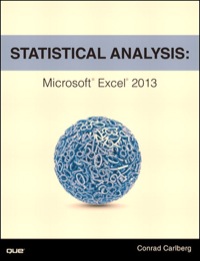Question
The old adage is true: crime pays. Criminals bought two Mercedes-Benz automobiles, a mansion in suburban Chicago, a Myrtle Beach apartment, expensive clothes and tailored
The old adage is true: crime pays. Criminals bought two Mercedes-Benz automobiles, a mansion in suburban Chicago, a Myrtle Beach apartment, expensive clothes and tailored and monogrammed shirts for their wives and a new car for their father-in-law. Because his employers never reported him, Miller has never been charged or imprisoned despite admitting to stealing from six separate employers over a 20-year span. Miller lost his first job for stealing $200. After odd occupations, he became an accountant for a neighborhood baker. Miller repaid the $1,000 he took after being caught. Again, no one called the cops, and he was quietly dismissed. Months later, the president of Wheeling Bronze, his third victim, discovered a $30,000 cash shortage and several unreturned cheques. The canceled checks with fraudulent signatures were found in an outside sand mound. Miller admitted to the plan and was given the option of restitution or prosecution. Miller dodged punishment after his parents mortgaged their home and reimbursed the stolen funds. Robinson Pipe Cleaning was Miller's fourth. He was found embezzling monies and offered to reimburse the $20,000 he took. Miller's sixth victim was his employer, Crest Industries. I loved him as a coworkerdedicated, hardworking, and performing great He became office manager and soon bought a new home, car, and clothing. Crest auditors discovered $31,000 missing two years later. Miller had made himself checks, paid vendors with them, and intercepted and altered monthly bank statements. He lived off the stolen funds and reimbursed Wheeling Bronze and Robinson Pipe Cleaning. Miller confessed again, claiming he had never embezzled funds before. Miller was so sorry that Crest got him a lawyer. He pledged to pay back the stolen funds, and was discreetly dismissed. Crest management did not file charges because they did not want to injure Miller's family. Rustcraft Broadcasting was Miller's sixth victim. Miller went to Pittsburgh when Associated Communications bought Rustcraft. Miller dipped into Associated's coffers right away. Miller embezzled $1.36 million over six years, including $450,000 as CFO. Miller got around the two signature requirement on checks by having executives sign many checks "just in case" the company needed to pay someone while he was away. A personal account was funded by the checks. Miller deleted the canceled check from the bank reconciliation to cover up the theft. The stolen funds were used to balance the company's finances. Miller bought a new house, automobiles, a vacation place, and an expensive clothing while at Associated. A good giver, he tipped and His $130,000 salary couldn't have supported this lifestyle, but no one at Associated questioned it. Miller's life fell apart while he was on vacation when the bank called regarding a cheque drawn to him. Miller confessed, and Associated received most of his personal belongings in an out-of-court deal. Miller wonders why he was never charged. His determination on repaying his victims generally got him off the hook. He feels these agreements fueled his further robberies, as stealing from a new employer was one way to repay the previous one. A subliminal urge to be respected and liked by others, Miller believes, drives his thieving problem. Others would like him if he spent money. He was generally liked and admired at each employment, for reasons unrelated to money. One Associated employee compared the thefts to discovering your brother was an ax murderer. Miller believes he is not a nasty person, but he couldn't stop once he started. Miller left Associated, went to counseling, and now believes he has overcome his obsessive embezzlement problem.
1. How does Miller fit the profile of the average fraud perpetrator? How does he differ? How did these characteristics make him difficult to detect? 2.Explain the three elements of the Opportunity Triangle (commit, conceal, convert), and discuss how Miller accomplished each when embezzling funds from Associated Communications. What specific concealment techniques did Miller use? 3.What pressures motivated Miller to embezzle? How did Miller rationalize his actions? 4.Miller had a framed T-shirt in his office that said, "He who dies with the most toys wins." What does this tell you about Miller? What lifestyle red flags could have tipped off the company to the possibility of fraud? 5. Why do companies hesitate to prosecute white-collar criminals? What are the consequences of not prosecuting? How could law enforcement officials encourage more prosecution? 6. What could the victimized companies have done to prevent Millers embezzlement?
7. Design Fraud Triangle and determine all Conditions for Fraud in details?
Step by Step Solution
There are 3 Steps involved in it
Step: 1

Get Instant Access to Expert-Tailored Solutions
See step-by-step solutions with expert insights and AI powered tools for academic success
Step: 2

Step: 3

Ace Your Homework with AI
Get the answers you need in no time with our AI-driven, step-by-step assistance
Get Started


